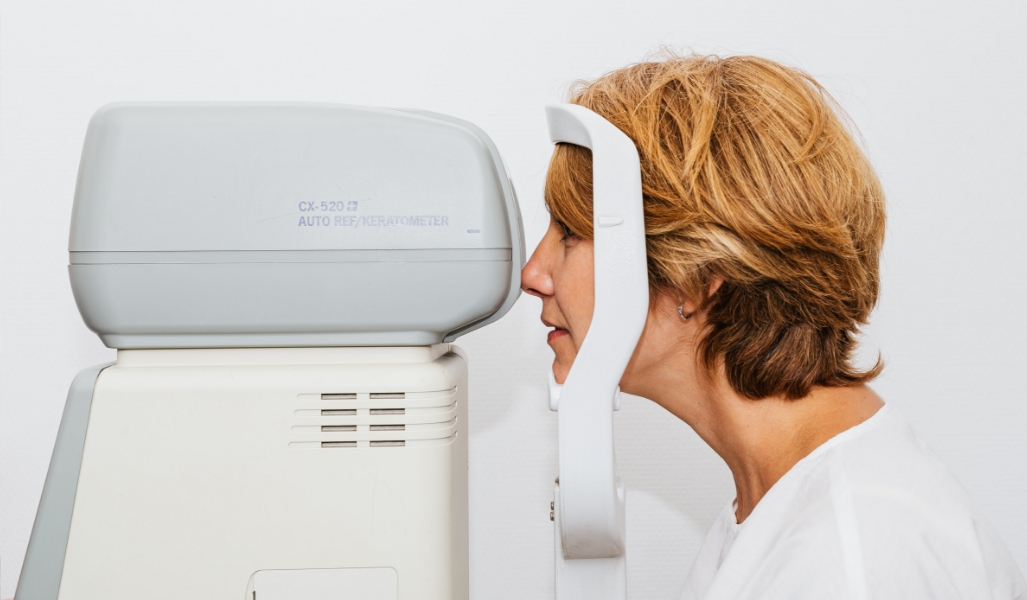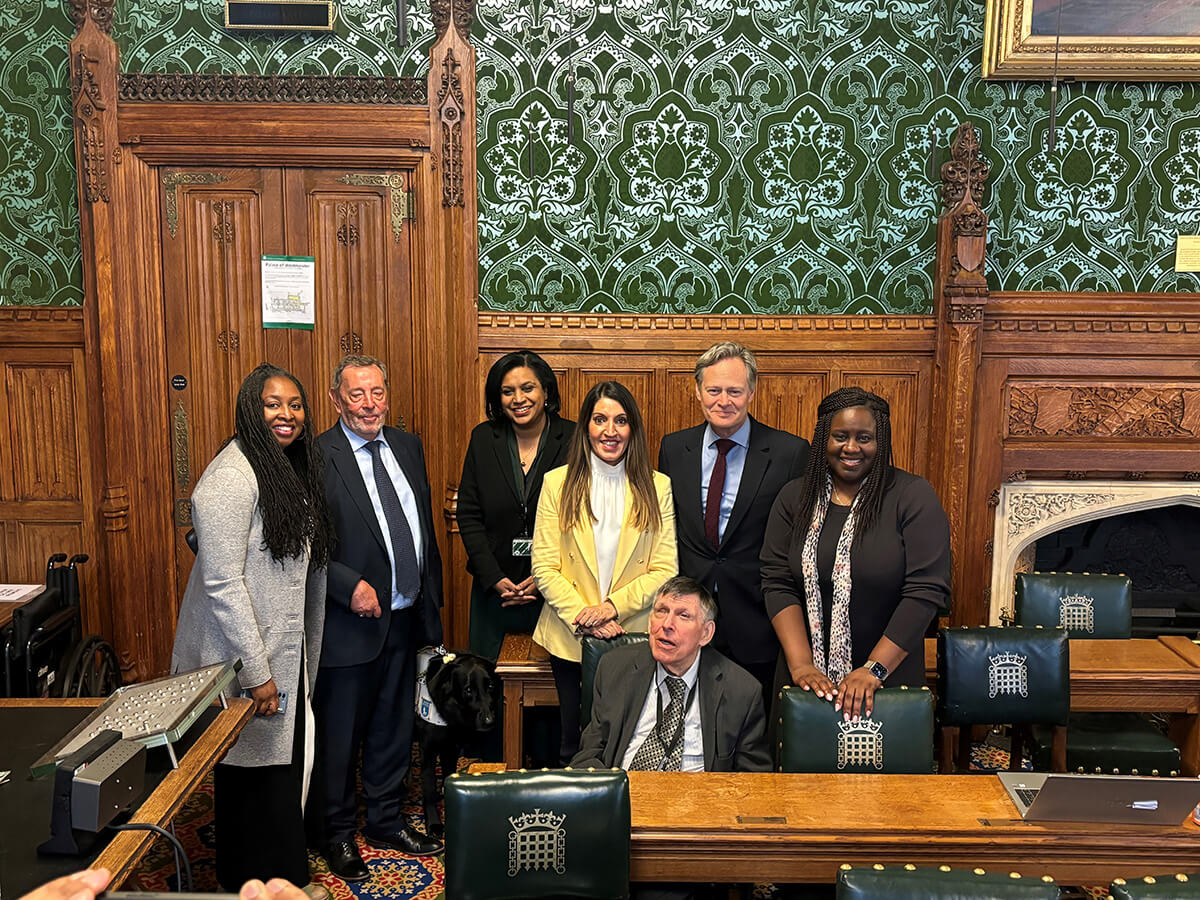26th April 2023
-
Wed, 26th Apr, 2023
-
2:00 pm

Committee Room 6, Parliament
14:00, 26th April 2023
Panelists:
Marsha De Cordova MP – Chair
Professor Leon Davies, President of the College of Optometrists
Professor Bernard Chang, President of the Royal College of Ophthalmologists
Dr Peter Hampson, Association of Optometrists
Adam Sampson, CEO, Association of Optometrists
Dr Seema Verma, Consultant Ophthalmologist, Guy’s and St Thomas’ NHS Foundation Trust
Liz Tomlin DBO SRO, Head Orthoptist & Eye team Lead, Guy’s and St Thomas NHS Foundation Trust
Overview
The APPG session discussed the eye care workforce and explored current challenges, opportunities and recommendations for the eye care workforce needed now, and in the future.
Minutes:
- Professor Leon Davies, Optometrist, President of the College of Optometrists, noted that optometrists provided 13 million appointments each year. He detailed the types of appointments optometrists provided and emphasized that optometrists should be at the heart of eye care across the UK. He called for health services to utilise the full use of the skills of optometrists and for optometrists to be identified as the first point of contact for eye health. He also spoke about the College’s data project, which would model the future workforce trends on what the sector needs in the future.
- Professor Bernard Chang, Royal College of Ophthalmologists, noted the college’s recent survey, which found severe workforce shortages, with less than a quarter of services having enough consultants and surgeons. In addition, 65% were having to use locums to fill consultant vacancies. Over half (57%), he said, had used locums for over 12 months. He also said over half (52%) had found it more difficult to recruit for consultant vacancies, whilst retention was more of a problem than recruitment with two thirds (67%) finding it more difficult to retain consultants. He expressed concerns about the backlog in waiting for eye care, including the 645,000 patients in the backlog at present, which is 50% more than in April 2020. He called for a national eye care plan and investment in IT and the estate.
- Dr Peter Hampson and Adam Sampson from the Association of Optometrists (AOP) presented data on the number of optometrists needed to meet the aim of moving optometry from secondary into primary care. From the models they had created, they had concluded that there would be enough optometrists to meet the Government’s aim to move provision into the primary setting. However, their estimations predicted that there would be some areas of the country with huge shortages. They also noted a strongly female entry into the profession and a huge appetite for flexible working, which would need to be considered in the future. They concurred with Professor Davies’ suggestion that the extensive skills of optometrists should be utilised by the health service. Respondents to their workforce service had identified glaucoma monitoring, AMD monitoring and medical retina monitoring.
- Dr Seema Verma from Guys and St Thomas’ Ophthalmology Department spoke about her experience working in the NHS, and highlighted the following:
• Pre-COVID, ophthalmology was already the busiest department in the NHS, being the busiest department in 2019.
• In 2014, they discussed with secondary care how they could start to do some things in the community, which worked because they had a workforce to undertake the actions in the community and commissioners insisted that training would be paid for.
• During COVID, when many of their hospital staff were deployed to Covid wards, they could use community colleagues to roll out post-op cataract care into the community setting.
• They established a Single Point of Access which ensures that all referrals come into the single point of access manned by trained and experienced ophthalmologists. This has helped identify patients waiting for treatment or tests that can be carried out quickly.
• This meant that clinicians could now make sure the patient goes to the right department, and the system was eliminating the number of patients being referred to the wrong place.
Liz Tomlin outlined her four-pronged approach, which included MDT clinics running all the time and a new workforce, including ophthalmic technicians (she noted Guys and St Thomas’ started in 2012 with two and were now up to 35, which has increased clinic efficiency and has allowed technician-led Diagnostic hubs seeing 400 patients a week). Based on their achievement, she told the group they had secured more funding and had opened 4 more diagnostic hubs.
Overall, the meeting explored the importance of utilising the skills of the eye care workforce and investing in the workforce, IT, and estate to improve services and reduce the backlog of patients waiting for treatment. A national eye care plan was called for, which would consider all specialisms within eye health.
Q&A
Carl Freeman – senior collaboration Manager, Guide Dogs, asked if there was a motivation amongst clinicians to provide a bridge to help individuals to get support from other services?
AOP said there would be an appetite, but there needed to be work to find out what guidance and training would be needed for the clinicians. He pointed to the work of pharmacists who had widened their scope and questioned whether the same sort of thing could be offered by high street optometrists.
AOP also said the challenge had historically been on funding. He said that when it led to more money being spent, it often put commissioners off. He reflected on the challenges for people attending eye health clinics and said that the hubs tackled people’s eye health issues often in familiar, accessible settings.
When asked about patient choice and the ophthalmologist audit, Professor Chang said that care was generally good. But the problem was accessing treatment, noting that the backlog had made it so much harder for patients to receive the treatment.
Seema Verma said that when diagnostic hubs were working, 2-2.5 times the number of patients could be screened.
Others asked about the pace of collaborative regulation. Professor Leon Davies said that the point of regulation was to ensure the patient was at the heart of care and the patient was covered.
Dr Hampson noted that whilst not all of the places were not registered, all of the practitioners undertaking the regulated action are registered. He agreed that it would be ideal to register all of the places, but at the same time does not overburden the smaller practices.
When asked about the impact of IT connectivity, Dr Hampson said that a connected system of optometrists across the UK with access to consultants would be a hugely important factor. Professor Chang said it was huge to ensure a high standard of care with a finite workforce. He said that common standards would ease accessibility.
Adam Sampson said that it was also about persuading consultants to trust practitioners to treat their patient effectively. Prof. Leon Davis said this was often predicated on a feedback loop to ensure the consultant of the outcomes for the patient. AOP said that IT can help improve those speed-up those feedback loops and essential to them.
Summary and Next Steps
The APPG officers have tabled written Parliamentary questions on some of the issues raised.
The publication of the Governments NHS workforce plan is due out shortly.
Marsha de Cordova MP and Chair of the APPG secured a Westminster Hall debate which took place yesterday on The Potential Merits of a National Eye Health Strategy, where she and others raised many of the workforce issues discussed at April’s APPG meeting. You can rewatch the debate here Parliamentlive.tv – Commons
A letter following the APPG meeting and yesterdays debate will be sent to the Secretary of State by all APPG members.
APPG Announcements’
The APPG held its AGM on Wednesday 26th April.
The follow Officers were selected:
Marsha de Cordova MP – Chair
Lord Colin Low – Co Chair
Lord David Blunkett – Vice Chair
Jim Shannon – Vice Chair
Officers:
Kate Osamor MP
Florence Eshalomi MP
Peter Gibson MP
Ian Byrne MP
Rupa Huq MP
Stephen Morgan MP
The next meeting will be on Wednesday 14th June, 3pm.
The next meeting will be in PERSON only.
A formal invite will be sent out in the coming days, however if you would like to RSVP for the June meeting now please email: contact@eyehealthviappg.org.uk
Please also save the date for the APPGs Summer Reception – This will take place in Parliament on Monday 18th September at 6.30pm.
Minutes of recent meetings
22nd February 2023
The APPG session looked into employment and the Access to Work scheme. Panelists and attendees discussed the advantages of the Access to Work scheme when it was deployed efficiently and highlighted the impact of delayed assessments and implementation had on people with sight loss.
26th April 2023
The APPG session discussed the eye care workforce and explored current challenges, opportunities and recommendations for the eye care workforce needed now, and in the future.
T* APPG Meeting (Eye Health) and AGM 2-4pm, Parliament
The Eye Health and Visual Impairment held its AGM on Tuesday 19th March.



